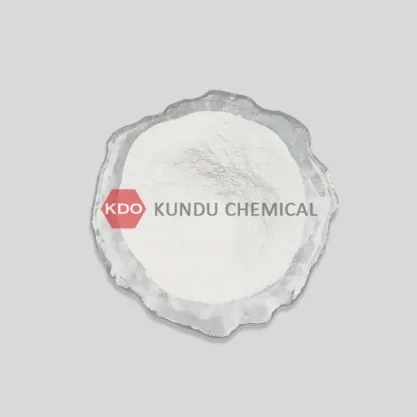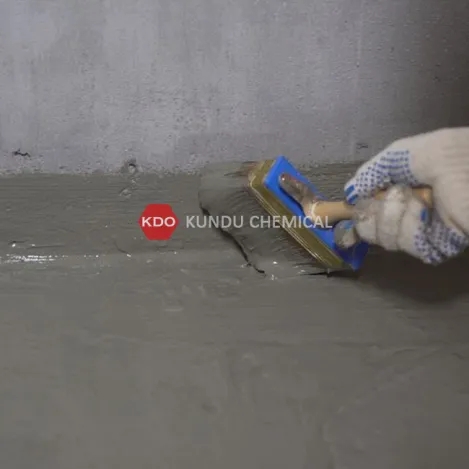- Time:2024/4/29Posted:SHANDONG KUNDU CHEMICAL CO.,LTD.
1. What is a high-efficiency water reducing agent?
Water-reducing agent is a concrete/mortar admixture that can reduce the amount of mixing water while maintaining the slump of concrete basically unchanged. After being added to the concrete/mortar mixture, it has a dispersing effect on the cement particles, which can improve its workability and reduce unit usage. Use water to improve the fluidity of the concrete/mortar mixture; or reduce cement usage per unit to save cement.
High-efficiency water-reducing admixture is a water-reducing agent that can significantly reduce the amount of mixing water under the condition that the slump of concrete is basically the same. Its water reduction rate can reach more than 20%, which can significantly reduce water consumption, thereby significantly improving Strength of concrete at various ages.

2. What are the types of high-efficiency water reducing agents?
High-efficiency water-reducing agents KPS-500,KPS-501,KPS-502 are different from ordinary water-reducing agents in that they have a higher water-reducing rate and lower air entrainment capacity. The main varieties of high-efficiency water-reducing agents currently used include the following:
1. Naphthalene series water reducing agent
Naphthalene series superplasticizers can be divided into high-concentration products (Na2SO4 content <3%), medium-concentration products (Na2SO4 content 3% to 10%) and low-concentration products (Na2SO4 content) according to the Na2SO4 content in their products. Content>10%). Naphthalene-based water-reducing agents are the most produced and widely used high-efficiency water-reducing agents in China (accounting for more than 70% of the water-reducing agent dosage). They are characterized by high water-reducing rates (15% to 25%) and no air entrainment. , has little impact on the setting time, has relatively good adaptability to cement, can be used in combination with various other admixtures, and is relatively cheap.
2. Melamine and modified melamine based water reducing agents
It is the product of melamine sulfonated with sulfuric acid and then condensed with formaldehyde. Therefore, its chemical name is sulfonated melamine formaldehyde resin, which is an anionic surfactant. This type of water-reducing agent appears as white powder, is easily soluble in water, has good dispersion of powder materials, has a high water-reducing rate, and has good fluidity and self-healing properties.
3. Sulfamate based water reducing agent
Sulfamate high-efficiency water-reducing agent is a monocyclic aromatic hydrocarbon-type high-efficiency water-reducing agent. It is mainly formed by heating and condensation of p-aminobenzenesulfonic acid, monocyclic aromatic hydrocarbon derivatives phenolic compounds and formaldehyde under acidic or alkaline conditions. The molecular structure of the sulfamic acid-based high-efficiency water-reducing agent is relatively complex, and different monomers will have different molecular structures. The main chain of the amino acid sulfonate-based high-efficiency water-reducing agent is composed of phenyl and methylene groups alternately linked. The main chain contains a large number of hydrophilic functional group branches such as sulfonic acid groups, amino groups, and hydroxyl groups.
4. Aliphatic (aldehyde and ketone condensate) water reducing agent
The aliphatic high-efficiency water-reducing agent is carbonyl pyraldehyde synthesized by sulfonation of polymers. The hydrophobic main chain is aliphatic hydrocarbons. This high-efficiency water-reducing agent has wide applicability to cement and has obvious reinforcing effect on concrete without slump loss. It is small, has no sodium sulfate crystallization phenomenon at low temperature, and is widely used in the preparation of pumping agents, retardants, early strength, antifreeze, air entrainment and other types of personalized water reducing agents. It can also be used with naphthalene series water reducing agents, amino water reducing agents, etc. Polycarboxylate superplasticizer is used in combination.
5. Anthracene water reducing agent
The tan powder produced by sulfonation, hydrolysis condensation, neutralization, atomization and drying of crude anthracene is non-toxic, odorless and does not contain chloride ions. It has high water reduction rate, low air entrainment and high reinforcement in concrete mixing. The concrete mixture has good workability in construction and is not easy to bleed or segregate. It is suitable for concrete with strength levels of C10~C60.
6. Oil-washing water-reducing agent
Using coking wash oil, another by-product of coal coking, as raw material, using a production process similar to that of naphthalene-based water-reducing agents, polycyclic aromatic hydrocarbon sulfonate formaldehyde condensate is produced, and its performance is similar to that of naphthalene-based water-reducing agents. . It is a water-reducing agent with wide sources of raw materials, low cost and great industrial value.

3. What is the difference between high-efficiency water-reducing agent and ordinary water-reducing agent?
Both high-efficiency water-reducing admixtures and ordinary water-reducing admixtures can effectively improve the flow properties of concrete mixtures and have similar functions. However, the two types of water-reducing admixtures are different in other aspects:
1. The water reduction rate of ordinary water reducing agents is usually 5% to 10%; while the water reducing rate of high-efficiency water reducing agents can reach 12% to 25%, or even higher.
2. High-efficiency water-reducing admixture can greatly improve the workability of concrete under the condition that the water-cement ratio remains unchanged. For example, adding high-efficiency water-reducing admixture can prepare high-fluidity concrete with a slump of 25cm without excessive air entrainment. , it will not cause excessive retardation of concrete; and under the condition that the cement dosage remains unchanged, the slump of concrete mixed with ordinary water-reducing agent is usually about 10cm.
3. Under the condition that the slump is basically the same, high-efficiency water-reducing admixtures can significantly reduce the mixing water consumption of concrete and significantly reduce the water-cement ratio, thus greatly improving the strength of concrete. Therefore, high-efficiency water-reducing admixtures are mainly used to configure strength levels. High fluidity concrete with high water-reducing requirements; while the water-reducing rate of ordinary water-reducing agents is relatively low and is mainly used to prepare concrete with low strength levels and low water-reducing requirements.
4. In terms of preparation cost, polycarboxylate high-efficiency water-reducing agent has a high solid content, so the price is relatively high; while ordinary water-reducing agents have low solid content, and the price will be low.
More information, please check our product catalog or contact us.





